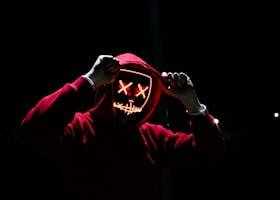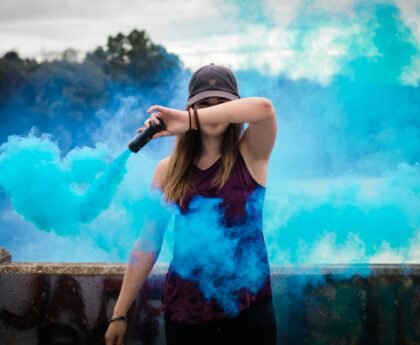Comedy has always been a mirror to society. From smoky clubs where stand-up comics test their timing, to living rooms where families laugh at sitcoms, humor has shaped how we connect. But today, something remarkable is happening. Comedy is no longer locked behind ticketed shows, late-night specials, or even television scripts. Instead, platforms like TikTok are shifting the stage. The sketch, the meme, and the short-form video are becoming the new open mic. Together, we are not only watching but also shaping what comedy looks like.
This change is more than just a passing trend. It is the rise of crowdsourced comedy. Instead of waiting for comedians to perfect an act over months of late-night gigs, we are seeing jokes tested, remixed, and amplified in real time. That speed, that instant feedback, has given humor a new life. And it is redefining what stand-up even means in the digital age.
The Shift From Stage to Screen
For most of the 20th century, stand-up followed a clear path. A comic wrote material, tested it in clubs, polished it, then maybe landed a spot on television or recorded a special. That long process gave jokes weight and tradition. But it also created limits. Only a few could break through, and audiences had to be in the right city or tune in at the right time.
TikTok has upended that system. A creator with nothing more than a phone can write, perform, and publish a joke in minutes. Instead of waiting for gatekeepers, audiences become the judge. A clever sketch, a meme spun into a one-minute routine, or even a simple lip-sync twist can reach millions overnight. In other words, the crowd decides what works.
This shift has lowered barriers. It has also broadened what counts as comedy. No longer do you need to stand in front of a microphone with a rigid set. Comedy can be a character rant, a parody duet, or a stitched reaction that lands the punchline with a shared laugh. The result is that the culture of humor feels more open, more alive, and far more participatory.
We also cannot ignore the pace. Traditional comedy cycles moved slowly, shaped by club tours and network schedules. TikTok operates at internet speed. Trends rise and fall within days. Jokes evolve as more creators remix the format. What began as a single sketch can ripple into thousands of variations, each with a slightly different angle. That collective back-and-forth creates comedy that feels less like a solo act and more like a group improv session happening across the globe.
Memes as the New Punchline
If stand-up is built on the setup and punchline, TikTok comedy thrives on the meme. A meme is more than an image with text—it is a format, a shared language. It invites everyone to try their version. On TikTok, memes become sketches in motion. A sound clip, a trending dance, or even a single facial expression can be reused by thousands. Each version adds a layer, until the joke takes on a life bigger than the original.
This meme-driven system has reshaped how comedians think about material. Instead of guarding jokes until they are perfected, creators release ideas quickly, almost like tossing sparks into dry grass. Some fade. Some ignite. The crowd decides which ones spread. In turn, those viral bits influence mainstream comedy. We are already seeing stand-up comics reference TikTok trends in live shows, knowing that their audiences will get the joke.
What makes memes powerful is their accessibility. A viewer does not need to be a professional comic to join in. You can record your own twist, add your own context, and share it with friends. In doing so, humor becomes less of a performance and more of a conversation. We are all part of the punchline.
Another strength of meme comedy is how it taps into the moment. Stand-up can take weeks or months to refine. A meme can capture the mood of a news story, a sports event, or even a random cultural hiccup within hours. That speed allows humor to move alongside our daily lives. Instead of a distant reflection, it becomes part of the immediate experience. We laugh together, right as things unfold.
The meme culture of TikTok also favors diversity. Voices once left out of traditional comedy spaces now thrive. Different accents, different life stories, different styles—all can find an audience. Comedy is not filtered by one set of norms. It grows richer, more layered, and more inclusive.
The New Role of the Audience
Perhaps the biggest change in this era of crowdsourced comedy is the role of the audience. In the past, audiences laughed, clapped, or booed. Their response shaped the moment, but it ended there. Now, the line between audience and performer is blurred. When you duet, stitch, or remix a TikTok, you are no longer just reacting—you are part of the act.
This shift changes how comedy is created. The audience does not just validate jokes. They co-write them. They take an idea and spin it further. They amplify what resonates and let weaker bits fade. The crowd becomes the editor, the producer, and sometimes even the star.
This dynamic has ripple effects on the art of stand-up itself. Traditional comics are beginning to use TikTok to test material, much like open mics of the past. They post a bit, watch how people respond, then refine it for the stage. But the difference is scale. Instead of a room of twenty people, they may get feedback from thousands. That rapid loop accelerates the creative process.
It also changes the stakes. A joke that bombs in a club stays in that room. A joke that misses on TikTok lives online forever. But the risk is also the reward. If it lands, it can spread globally in hours. For comics willing to adapt, that is a trade worth making.
The new audience role also builds community. Humor has always been a tool for belonging. TikTok magnifies this by creating small clusters of inside jokes, known as niche communities or “sides” of the platform. One group may thrive on absurdist sketches. Another may bond over shared cultural experiences. Another may focus on parody news. Instead of a single mainstream voice, comedy is now a collection of communities, each with its own tone.
This crowdsourced model does not erase traditional stand-up. If anything, it pushes it forward. Comedy clubs still matter. Specials still matter. But the path is different. More voices can be heard. More styles can rise. And audiences, instead of waiting, are active players in shaping what becomes funny tomorrow.
New Laughter, Shared Together
Comedy has always reinvented itself to fit the times. Radio brought sketch shows into homes. Television created the sitcom boom. Late-night gave stand-up a global spotlight. Now, TikTok and meme culture are doing the same. They are reshaping how we laugh, how jokes spread, and who gets to join in.
What makes this moment exciting is its openness. We no longer rely on a handful of gatekeepers to decide what is funny. We create it together. The punchline is not owned by one voice but shared by many. And that shared laughter has power. It connects us, even when we are far apart.
Crowdsourced comedy is not just changing stand-up. It is reminding us that humor is a living thing. It grows when we play with it. It thrives when we share it. Most of all, it belongs to all of us.
A Fresh Era of Humor
We are standing in a new age of comedy. The sketches, the memes, the stitched jokes—they are not distractions. They are the evolution of the art. Together, we are building it, one laugh at a time. The clubs still stand, the stages still shine, but the crowd has claimed its place in the spotlight. And that is what makes this era unlike any before.




